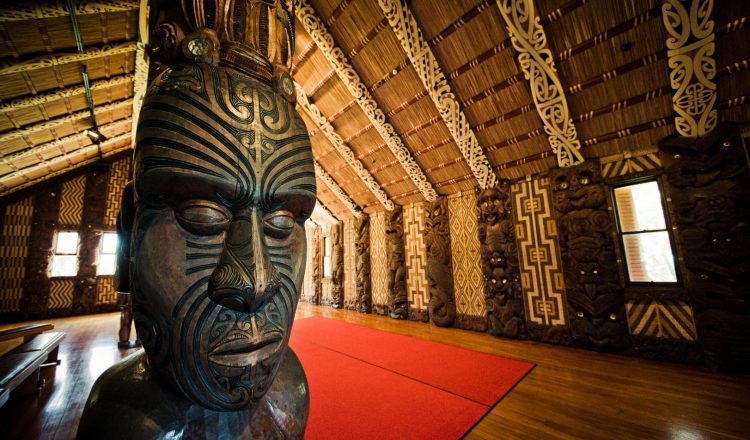Maori Arts
With a deeply held belief that art and creativity is the vehicle of the gods, Maori arts and crafts are a sacred part of their culture and are one of the few aspects of Maori life that are recognisable around the world. The Maori believe that the past is the future and that the present is a loop. For this reason, many traditional art practises try to remain as close to the ancestral techniques as possible. The sanctity of the art is not just in its creation, but in its passing down through generations.
Pounamu (Greenstone)
Pounamu or greenstone is a durable hard stone, treasured in Maori culture. Traditionally, greenstone could be nephrite jade, bowenite or serpentinite; however, nephrite jade is the most common form of the stone today. The Maori consider pounamu to be taonga, sacred Maori treasure. Due to this, areas where you can find greenstone, are usually protected by government legislation, with the local iwi in charge of its distribution.
The Maori used pounamu for tools and ornaments. When the tool became too old to use, they transitioned the stone into jewellery. Having a piece made of greenstone was seen to enhance prestige in Maori society, but buying or carving it for yourself can bring bad luck! Greenstone necklaces and jewellery remain very popular around the world. Disney referenced the importance of greenstone in their movie Moana.
Whakairo (Carving)
The art of Whakairo or carving is still an essential part of daily life for the Maori. Traditionally wood, stone and bone were used for carving purposes, as well as greenstone. Carving styles differ between iwi, but whakairo takes influence from nature and the material used. Wood is the most commonly carved material by the Maori, as they would traditionally use the local timber for creation of their waka (canoe). Wood carving is still an important part of modern Maori culture as they use it to decorate the Marae. Bone carving usually used whalebone and was utilised to make intricate tools like fishing hooks, or ornaments.
Maori carvings usually depict the human body, or Manaia, a bird-headed serpent that acts as a guardian. The art of whakairo is profoundly spiritual and still passed down today.
Raranga (Weaving)
Maori weaving, or Raranga, is more than just the creation of clothes and garments. It is a practice that transmits a message from the gods through the artist. It is a sacred art that has been passed down through generations and is still taught in private or even at a university level in New Zealand.
Flax is often the material of choice, as weavers create beautiful intricate clothes, basketry, wall hangings and much more. Members of the Maori community wear the clothes made by traditional weaving techniques during ceremonies. Performers wear them to increase their prestige and declare parts of their heritage. Maori weaving usually utilises the naturally available colours like black, white and gold, but in modern times dyes are sometimes used to enhance the product.
Ta Moko (Tattoo)
To say Ta Moko is just the art of tattooing in Maori culture would be a big understatement. It is a very special practice for those that choose to commit to it. The Maori tattoos are similar to other Polynesian tribal designs but don’t just serve an aesthetic purpose. Tattoos on the face and body speak a visual language and can communicate information about the person, their tribe, history and social standing. This tribal message is worn with cultural pride and displays the integrity of the Maori person. Both men and women can be tattooed, with face tattoos holding the highest honour, as the head is considered sacred in Maori culture. The facial tattoos emphasise expressions which can lead to those unfamiliar with them finding the tattoos slightly intimidating. This needn’t be the case as they serve mainly as a declaration of identity and can even promote changes in the Maori person’s lifestyle to live in accordance with the messages that their tattoo conveys.

















































